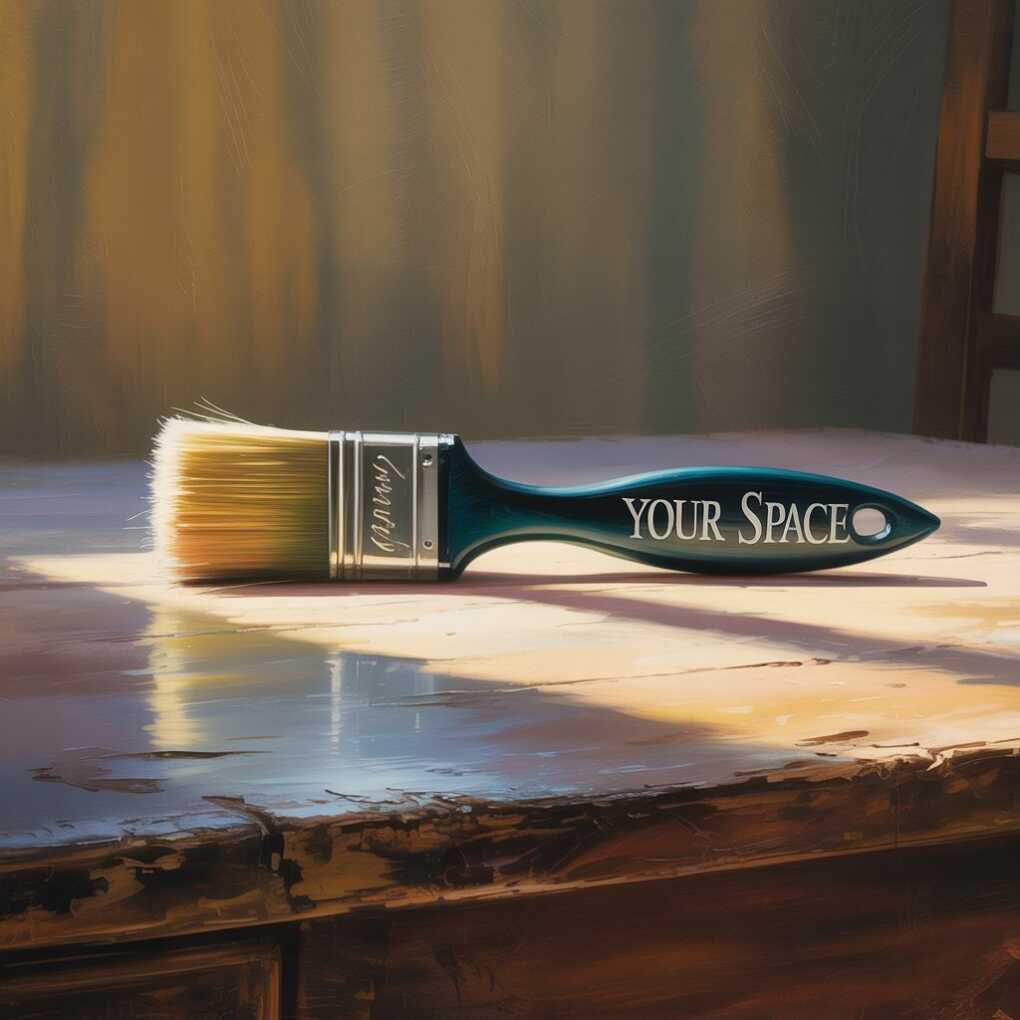Your home is your sanctuary. Your canvas. And in 2025, the paint trends are all about creating a space that feels deeply personal, authentically you, and utterly alive. Gone are the days of sterile, all-white interiors. We’re moving toward colors with soul. Colors that tell a story. This year is a bold embrace of nature, nostalgia, and a dash of futuristic energy.
Think you can’t achieve this high-end look yourself? Think again. With the right preparation, a bit of courage, and this guide, you can absolutely transform your space with your own two hands. We’re diving into the top 2025 color trends—from serene Sage Green to electrifying Electric Blue—and giving you the practical, no-nonsense DIY tips to make them work in your home. Let’s get inspired.

The 2025 Color Palette: Nature Meets Nostalgia
This year’s trends are a fascinating mix. On one hand, we have a powerful pull toward the calming, grounding elements of the natural world. On the other, a playful embrace of bold, retro-inspired hues that add drama and personality. It’s a balance of warm and cool, bold and subtle.
“In 2025, we’re seeing homeowners embrace richer, warmer tones that feel both modern and timeless,” says Mykhailo Diachenko, owner of Paintman NYC. “Whether it’s a DIY accent wall or a full-home project, the right colors can completely transform a space.”
Let’s break down the colors you need to know.
1. The Greens: Dill & Sage
Green isn’t going anywhere, but it’s evolving. We’re moving beyond the grey-undertones of previous years into warmer, herbaceous shades.
- Sage Green: This is the quiet achiever. A soft, grey-green that whispers serenity. It’s incredibly versatile, working in almost any room and with any lighting. It brings the outdoors in without overwhelming the senses. Perfect for creating a zen-like atmosphere.
- Dill Green: A step brighter than sage, dill green has more yellow in its base. It feels fresh, energetic, and a little bit retro. It’s optimistic and welcoming, fantastic for spaces where you want to feel awake and joyful.
Pro Tip: Green is notoriously tricky with artificial lighting. Always get a sample pot and paint a large (2’x2′) swath on your wall. Look at it in the morning, noon, and night. See how it changes. This simple step prevents a costly and frustrating mistake.
2. The Dramatic Depth: Burgundy
Forget the dated, 90s-era burgundy. The 2025 version is richer, more nuanced. Think crushed velvet, fine wine, and twilight skies. It’s a color of passion, sophistication, and incredible depth. It works beautifully as an accent wall in a study, a dining room, or even a bedroom for a cozy, cocooning effect. It pairs stunningly with dark woods, brushed brass, and black accents.
3. The Earthly Embrace: Warm Earth Tones
This is a whole family of colors. Think terracotta, ochre, burnt orange, and warm clay. These are the colors of sun-baked deserts and canyon rocks. They are inherently welcoming, grounding, and human. They make a space feel instantly lived-in and comfortable. They work exceptionally well in open-plan living areas, bringing warmth to large spaces.
4. The Electric Jolt: Electric Blue
Ready for a shot of adrenaline? Electric blue is the wild card of 2025. It’s bold, it’s confident, and it’s not for the faint of heart. This isn’t a color for an entire room for most people. But used strategically—on a ceiling, inside built-in shelving, on a single piece of statement furniture, or a front door—it creates an unforgettable, high-energy focal point. It’s pure joy in a can.
Your DIY Painting Masterclass: How to Get It Right
Alright. You’re inspired. You’ve chosen your color. Now for the real work. Doing it yourself can be incredibly rewarding. And it can save you a significant amount of money. But the difference between a professional-looking job and a messy one is all in the preparation.
Pre-Paint Prep: The 80/20 Rule
Listen up. This is the most important part. Pros will tell you that preparation is 80% of the job. The actual painting is just the final 20%. Skimp on prep, and you’ll see it in every flawed finish.
- Clear the Room: Get everything out. Absolutely everything. It’s a pain, but it’s non-negotiable.
- Clean the Walls: Dust and grime are the enemy of adhesion. Use a mixture of TSP (trisodium phosphate) substitute and water to wash your walls. Let them dry completely.
- Repair and Patch: Inspect your walls for holes, cracks, and dings. Use spackling paste to fill them. Sand smooth once dry. This step makes all the difference.
- Tape and Cover: Use high-quality painter’s tape (FrogTape is a favorite) to protect trim, ceilings, and outlets. Lay down canvas drop cloths—not plastic, which is slippery and doesn’t absorb spills.
Pro Tip: Remove outlet and switchplate covers. Don’t try to paint around them. It takes two minutes and guarantees clean lines. A total game-changer.
The Tools of the Trade
You don’t need the most expensive gear, but don’t buy the absolute cheapest either.
- Brushes: A 2-inch angled brush for cutting in (the edges) and a wider brush for trim.
- Rollers: A roller frame and a selection of roller covers (often called naps). Use a shorter nap for smooth walls and a thicker nap for textured surfaces.
- Paint Tray: A standard metal or plastic tray with a liner.
- Paint: This is where you splurge. High-quality paint has better pigments, covers better, and goes on smoother. It often requires fewer coats, saving you time and effort.
The Technique: Cutting In and Rolling
This is the dance of DIY painting.
- Cutting In: Using your angled brush, carefully paint a 2-3 inch strip along all the edges of the wall—where the wall meets the ceiling, the trim, and in the corners. This doesn’t have to be perfect, but try to keep it clean.
- The “W” Method: Pour paint into your tray. Load your roller evenly, making sure it’s not dripping. Start in a top corner of the wall and roll on the paint in a “W” or “M” pattern. This distributes the paint evenly without leaving obvious lines. Then, without lifting the roller, fill in the gaps with parallel strokes.
- Keep a Wet Edge: Work on one wall at a time and try to maintain a “wet edge” as you roll. This means rolling over areas before the paint from your previous strokes has dried, which helps to blend everything seamlessly and avoid lap marks.
Do two coats. Always. Even if it looks okay after one. The second coat ensures depth, even color, and durability.
Bringing Trends to Life: Room-by-Room Inspiration
Let’s put these ideas into practice. How do these 2025 trends actually work in real rooms?
The Living Room: Warm Earth Tones for a Cohesive Feel
The living room is for relaxing, connecting, and unwinding. Warm earth tones are perfect here. Imagine a soft terracotta on the walls. It’s incredibly inviting. Pair it with a sleek, dark brown leather sofa, some neutral linen curtains, and plenty of green plants. The room feels grounded but stylish. For a DIY approach, this is a great candidate for a full-room project. The color is forgiving and the vibe is relaxed, so a slightly imperfect finish (if you’re a beginner) won’t feel out of place.
The Kitchen: Dill Green for a Fresh, Energizing Vibe
The kitchen needs energy. Dill green on lower cabinets is a stunning choice. It’s fresh and appetizing. Keep the upper cabinets a bright white or a warm off-white to keep the space feeling open and airy. Pair with brass hardware and butcher block countertops for a look that’s both modern and rustic. This is a more advanced DIY project. Painting cabinets is all about patience and prep—sanding, degreasing, and using the right primer are critical. If your cabinets are a complicated shape, it might be a job for a pro.
The Primary Bedroom: Sage Green & Burgundy for a Luxurious Retreat
Your bedroom should be your sanctuary. Create a cocooning effect with a deep, calming sage green on all walls. Then, for your accent wall behind the bed, go dramatic with a rich burgundy. This combination is deeply luxurious and calming. Add textured bedding, black metal lamps, and plenty of soft lighting. This is a perfect intermediate DIY project. The accent wall allows you to be bold without commitment, and the two colors create a complex, high-end look that’s surprisingly achievable.
Knowing When to Call in the Pros
DIY is fantastic. But it’s not always the right call. Be honest with yourself about your skill level, your available time, and the scope of the project.
You should probably hire a professional if:
- The ceilings are very high or the architecture is complex.
- The surface requires significant repair you’re not comfortable with (water stains, major cracks, etc.).
- You’re painting intricate cabinets or detailed trim work.
- The project is massive (a whole house) and you have a tight timeline.
- You simply want a flawless, guaranteed result without the stress and mess.
A professional team brings expertise, efficiency, and the right equipment. They get it done fast and to a standard that can be hard to achieve on your own. It’s an investment in quality and your own peace of mind.
For those in New York, considering the unique challenges of apartment living and fast-paced lifestyles, reaching out to a local expert can be the best first step. You can connect with Mykhailo Diachenko, owner of Paintman NYC on his Mykhailo LinkedIn profile to see his professional approach and expertise.
Your Canvas Awaits
2025 is all about bold expression. It’s about ditching the fear and painting with passion. Whether you choose the calming whisper of sage, the energetic punch of dill, the deep drama of burgundy, the grounded warmth of terracotta, or the electric jolt of blue, your home is ready for its transformation.
Grab a brush. Embrace the trend. Or, know when to hand the brush over for a perfect finish.
Ready to see your vision come to life with a flawless, professional touch? Explore our professional painting services at Paintman NYC and let’s create something beautiful together.
